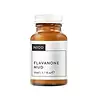What's inside
What's inside
 Key Ingredients
Key Ingredients

 Benefits
Benefits

 Concerns
Concerns

 Ingredients Side-by-side
Ingredients Side-by-side

Water
Skin ConditioningMontmorillonite
AbsorbentKaolin
AbrasiveBisabolol
MaskingSilica Cetyl Silylate
Isodecyl Neopentanoate
EmollientPanthenyl Triacetate
Glucosyl Hesperidin
HumectantPotassium Azeloyl Diglycinate
Skin ConditioningGlycerin
HumectantButylene Glycol
HumectantResveratrol
AntioxidantNaringenin
Skin ConditioningArginine
MaskingAlteromonas Ferment Extract
Skin ConditioningPerfluorodecalin
Skin ConditioningSimmondsia Chinensis Seed Oil
EmollientGlycosphingolipids
EmollientPropanediol
SolventXanthan Gum
EmulsifyingCarrageenan
Acacia Senegal Gum
MaskingSucrose Palmitate
EmollientTrisodium Ethylenediamine Disuccinate
Ethoxydiglycol
HumectantPotassium Sorbate
PreservativeSodium Benzoate
MaskingPhenoxyethanol
PreservativeChlorphenesin
AntimicrobialWater, Montmorillonite, Kaolin, Bisabolol, Silica Cetyl Silylate, Isodecyl Neopentanoate, Panthenyl Triacetate, Glucosyl Hesperidin, Potassium Azeloyl Diglycinate, Glycerin, Butylene Glycol, Resveratrol, Naringenin, Arginine, Alteromonas Ferment Extract, Perfluorodecalin, Simmondsia Chinensis Seed Oil, Glycosphingolipids, Propanediol, Xanthan Gum, Carrageenan, Acacia Senegal Gum, Sucrose Palmitate, Trisodium Ethylenediamine Disuccinate, Ethoxydiglycol, Potassium Sorbate, Sodium Benzoate, Phenoxyethanol, Chlorphenesin
Water
Skin ConditioningKaolin
AbrasivePropanediol
SolventCetyl Alcohol
EmollientGlycerin
HumectantGlyceryl Stearate
EmollientBentonite
AbsorbentNiacinamide
SmoothingSalicylic Acid
MaskingCassia Angustifolia Seed Polysaccharide
Skin ConditioningHelianthus Annuus Seed Oil
EmollientHydrolyzed Gardenia Florida Extract
AntioxidantViola Tricolor Extract
EmollientHemocyanin
AntimicrobialMagnesium Aluminum Silicate
AbsorbentCetearyl Olivate
Charcoal Powder
AbrasiveStearyl Alcohol
EmollientSorbitan Olivate
EmulsifyingMaltodextrin
AbsorbentHydroxyethylcellulose
Emulsion StabilisingTetrasodium Glutamate Diacetate
Sodium Citrate
BufferingEthylhexylglycerin
Skin ConditioningPhenoxyethanol
PreservativeWater, Kaolin, Propanediol, Cetyl Alcohol, Glycerin, Glyceryl Stearate, Bentonite, Niacinamide, Salicylic Acid, Cassia Angustifolia Seed Polysaccharide, Helianthus Annuus Seed Oil, Hydrolyzed Gardenia Florida Extract, Viola Tricolor Extract, Hemocyanin, Magnesium Aluminum Silicate, Cetearyl Olivate, Charcoal Powder, Stearyl Alcohol, Sorbitan Olivate, Maltodextrin, Hydroxyethylcellulose, Tetrasodium Glutamate Diacetate, Sodium Citrate, Ethylhexylglycerin, Phenoxyethanol
Ingredients Explained
These ingredients are found in both products.
Ingredients higher up in an ingredient list are typically present in a larger amount.
Glycerin is already naturally found in your skin. It helps moisturize and protect your skin.
A study from 2016 found glycerin to be more effective as a humectant than AHAs and hyaluronic acid.
As a humectant, it helps the skin stay hydrated by pulling moisture to your skin. The low molecular weight of glycerin allows it to pull moisture into the deeper layers of your skin.
Hydrated skin improves your skin barrier; Your skin barrier helps protect against irritants and bacteria.
Glycerin has also been found to have antimicrobial and antiviral properties. Due to these properties, glycerin is often used in wound and burn treatments.
In cosmetics, glycerin is usually derived from plants such as soybean or palm. However, it can also be sourced from animals, such as tallow or animal fat.
This ingredient is organic, colorless, odorless, and non-toxic.
Glycerin is the name for this ingredient in American English. British English uses Glycerol/Glycerine.
Learn more about GlycerinKaolin is a clay. It is used for oil control and to help minimize pores. Like other clays, kaolin has the ability to absorb excess sebum or oil. This can help clean out pores and mattify the skin.
Some types of kaolin may have exfoliating properties. When water is added to kaolin, it becomes a paste with small abrasive particles.
Most kaolin is a white color, but may be pink/orange/red depending on where it comes from.
The name 'kaolin' comes from a Chinese village named 'Gaoling'. Kaolin clay comes from rocks rich in kaolinite. Kaolinite, the mineral, has a silicate layered structure. Kaolinite is formed from chemical weathering of aluminum siilicate minerals.
Besides skincare, kaolin is commonly used to make glossy paper, in ceramics, toothpaste, and as medicine to soothe stomach issues.
Learn more about KaolinPhenoxyethanol is a preservative that has germicide, antimicrobial, and aromatic properties. Studies show that phenoxyethanol can prevent microbial growth. By itself, it has a scent that is similar to that of a rose.
It's often used in formulations along with Caprylyl Glycol to preserve the shelf life of products.
Propanediol is an all-star ingredient. It softens, hydrates, and smooths the skin.
It’s often used to:
Propanediol is not likely to cause sensitivity and considered safe to use. It is derived from corn or petroleum with a clear color and no scent.
Learn more about PropanediolWater. It's the most common cosmetic ingredient of all. You'll usually see it at the top of ingredient lists, meaning that it makes up the largest part of the product.
So why is it so popular? Water most often acts as a solvent - this means that it helps dissolve other ingredients into the formulation.
You'll also recognize water as that liquid we all need to stay alive. If you see this, drink a glass of water. Stay hydrated!
Learn more about Water